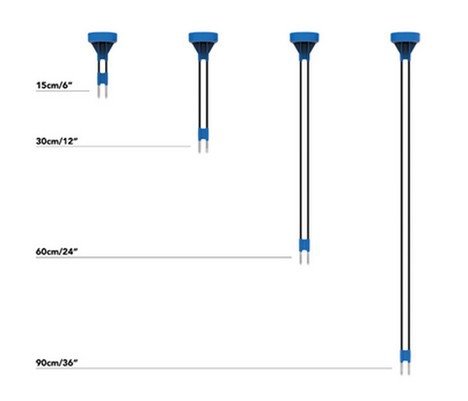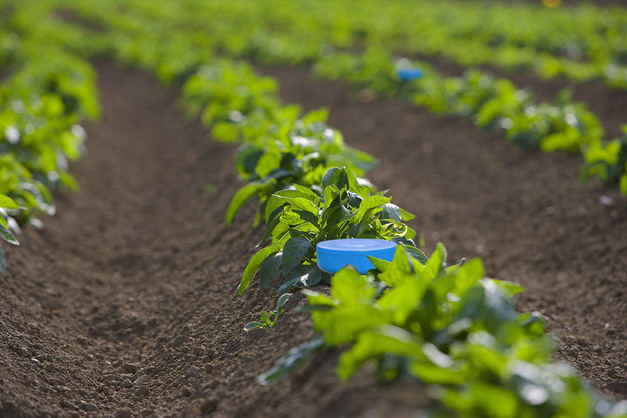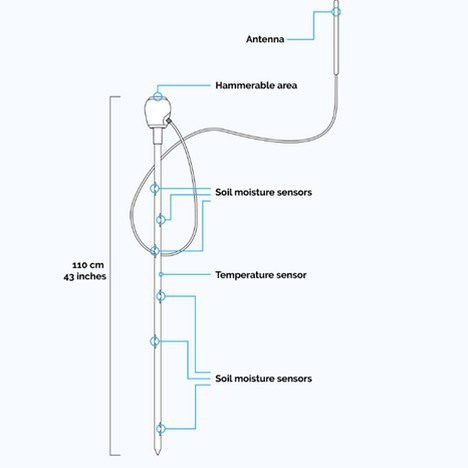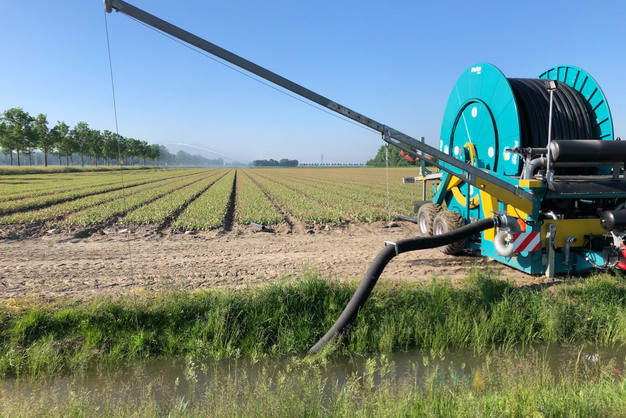By 2027, there is an agreement that no nutrients or emission of plant protection products should be in the water throughout Europe. If this target is not met, the European Commission will come up with measures such as restricting plant protection products. Growers will therefore have to treat their water properly and use it more economically. In this context, Sensoterra has been nominated for the KVK Innovation Top 100 with their moisture sensors. René Voogt, co-CEO at Sensoterra: "Our moisture sensors measure the moisture content in the soil and have been nominated because they are very accurate. The sensors are sturdy so you can hammer them into the ground. They are maintenance-free, last 8 years, and can stay in the same place." The award ceremony will be held on 30 November 2023.
Two types of sensors
Sensoterra has two sensors: Multi Depth sensors and Single Depth sensors. The latter measures water at one spot in the soil and the former at six different depths. It is possible to put several of them in the greenhouse. "Because the Multi-Depth sensor measures the moisture content at several places in the soil, it is easy to see how the moisture rises from the bottom to the top. This gives growers an insight into the moisture level in their soil." It is important to determine the length of the sensor based on the root depth of the crop.

Single depth sensor.

Number of sensors and cost
The number of sensors depends on the number of crop types and irrigation zones a grower has. "Normally you put one or two per section. There are different rules of thumb on how many crop sensors you need." Sensoterra works with a number of installation parties. Growers pay per month for the crop sensors.
Using water more economically
Growers have to use water more and more economically as a result of regulations from Europe. These sensors make it possible to prepare for this. It prevents unnecessary work, as growers roll out their hoses to irrigate for a reason. "You can see exactly how much moisture is in the soil. You don't want to water too much and on the other hand, don't want to dry out your crop. This way, you can take care of your crop in the best possible way." Wildkamp, a watering supplier, guides growers after purchasing a sensor. Growers can also obtain accessories there. There is a three-year warranty on the water sensors. There is a lifetime warranty on the sensors' probes and legs.

Multi depth sensor.

"Right now, water is becoming increasingly scarce. We need to move to stricter regulations. With this system, growers can prepare for those strict regulations. Growers can save water and with it energy and man hours. The sensor is already being used in many places. Sometimes we notice reluctance or doubt. But the water problem is getting bigger and bigger, and with it the restrictions are increasing. Sensors can offer solutions in this respect," concludes René.
For more information:
Sensoterra 
De Molen 28C
3994 DB Houten
[email protected]
www.sensoterra.com
